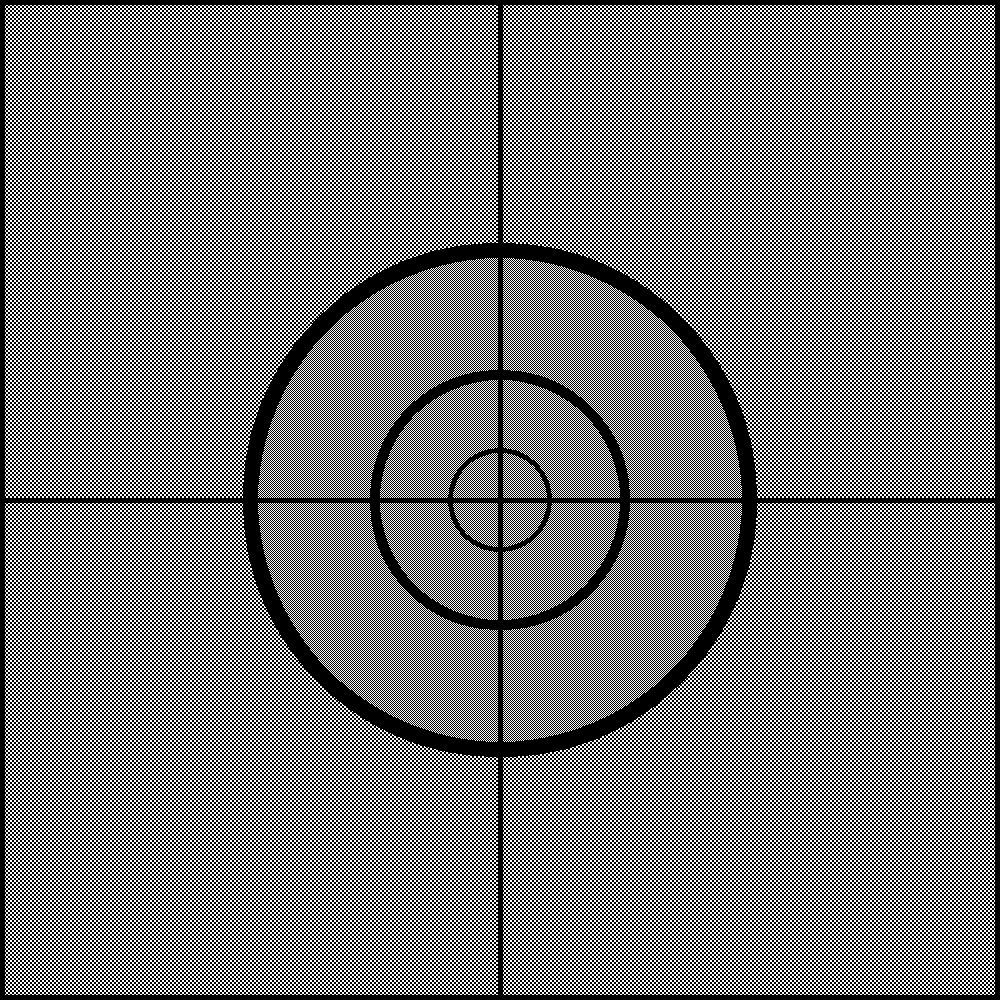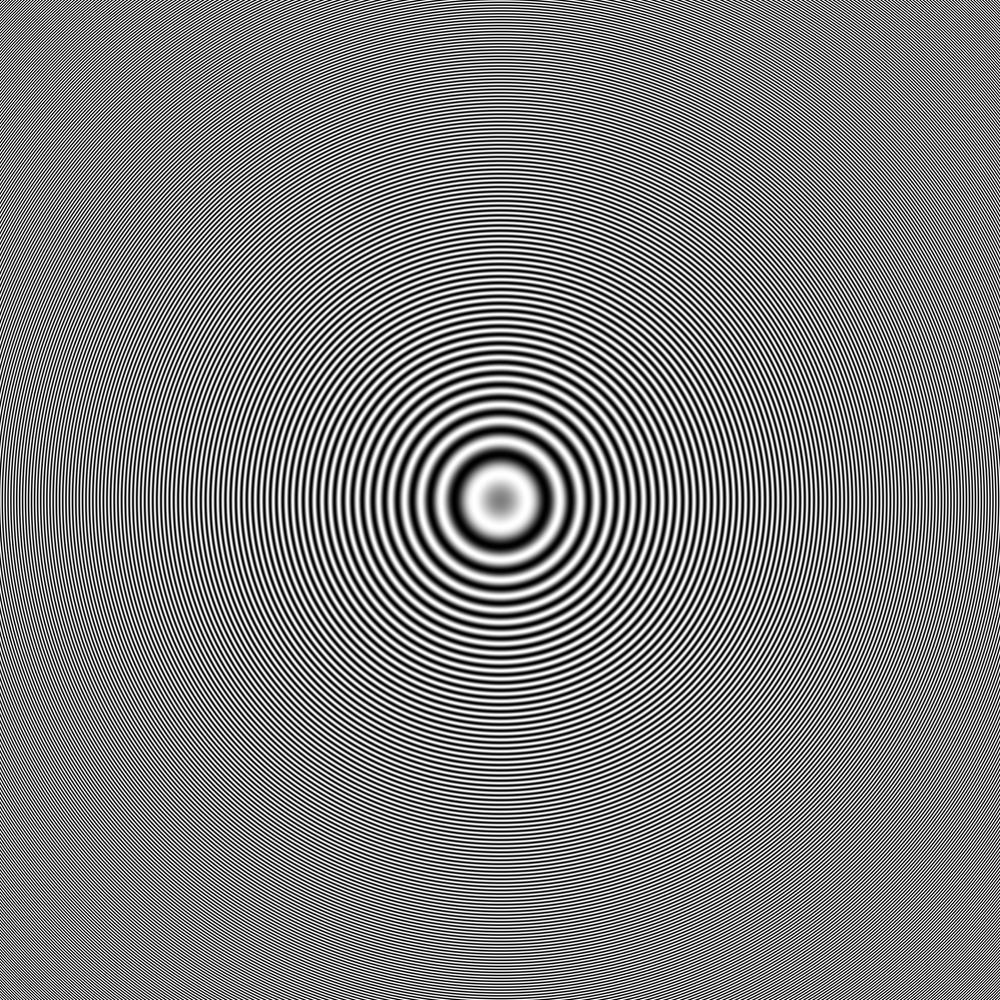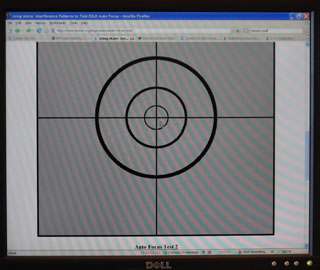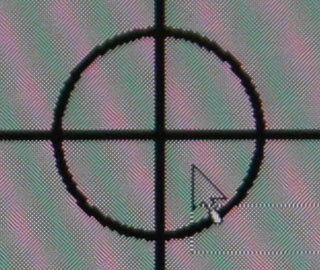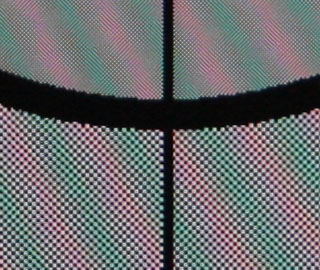LCD Screen at full 300mm Telephoto
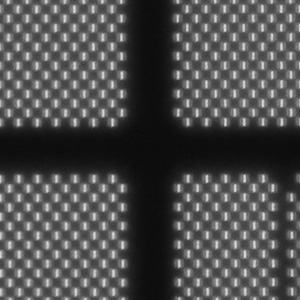
Auto Focus using Phase Detection
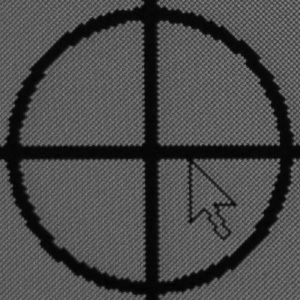
Sharper with Manual Adjustment
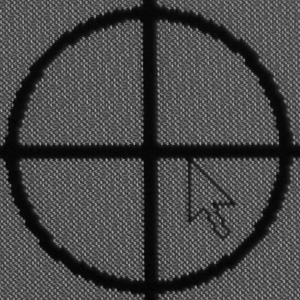
|
|
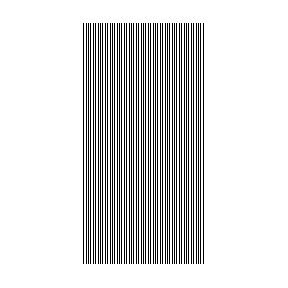 |
Wolfram talks about the Moire' effect which generates interference patterns as seen at the left
in the rotating image -
see more Moire' examples here.
You can also view this by scrolling the
screen up and up & down while looking at the two large images
below, especially the later one. And better yet, try resizing those
images to various sizes on your LCD - again, the later one
will really show some very funky interference patterns.
|
Everyone wants their pictures to have the sharpest possible focus,
and thanks to modern technology, this is often achieved automatically by
today's digital cameras - see my extensive
testing
of the Canon 40D versus 400d using objects at varying distances.
However, I had some
back-focus problems
with one particular lens.
I recently became aware of
a nifty way to test auto focus that exploits the interference patterns (moire')
of the camera's LCD screen.
First, DSLR's (by definition - Single Lens Reflex!) use
phase detection for auto focusing.
I.e. a secondary mirror and beam splitter
sends light to the viewfinder and to the AF sensor, which then acts as a
range-finder to determine direction and amount of correction required.
The mirror then flips out of the way when the shot is actually taken so the
sensor can image the picture.
Most point-n-shoots and video cameras use contrast detection, which
uses the imaging sensor itself, and incrementally moves the lens
until the highest amount of contrast is achieved.
Phase detection tends to be faster and more accurate (especially in
low light and/or minimum contrast situations) ... although note that
since contrast detection uses the sensor itself, it has the potential to be
more accurate as it is not dependant on secondary hardware being aligned, etc.
Recently, DSLR's have starting offering a "Live View" capability (along
with optional phase detection auto focus) which
allows you to view real-time on the camera LCD what the sensor is imaging.
So you can very quickly/easily see if the auto focus is accurate (using
the 10X capability) for general shooting of static objects.
The test images below work quite well for repeatable and precise calibration.
Note that some camera's allow a Micro-Focus adjustment (such as
the Canon 50D)
to bias
the lens to front or back-focus ... but keep in mind this may change
with distance ... and if a zoom lens, with focal length.
The test is quite simple - have one of the images below on your LCD screen
and setup your camera on a tripod some distance away pointing directly at it
and select a focus point.
Use the the widest aperture (i.e. minimum depth of field) and tap the
auto focus button, then switch to Live View. Manually rotate
the focus either direction to see if any improvement - at the
optimum setting, you should be able to see individual pixels,
rather than a uniform grey.
Some 100% crops are shown at the left - all from a 70-300mm lens;
the later two were at wide-angle.
While Phase Detection auto focus was pretty accurate as shown
in figure #2, it's slightly off and can be improved as seen
in figure #3 - note that both pictures were shot at F/4.5 and
1/60 second ... interesting how the second image appears different;
probably due to crisper blacks & whites.
I zoomed in to 300mm for the first image to better
show the actual pixels on your LCD screen - note the mouse cursor.
I welcome any comments on this auto focus test and
see more misc. camera stuff from me.
Bruce Debonis did a nice writeup on this plus comparison to Reikan Focal.
|




